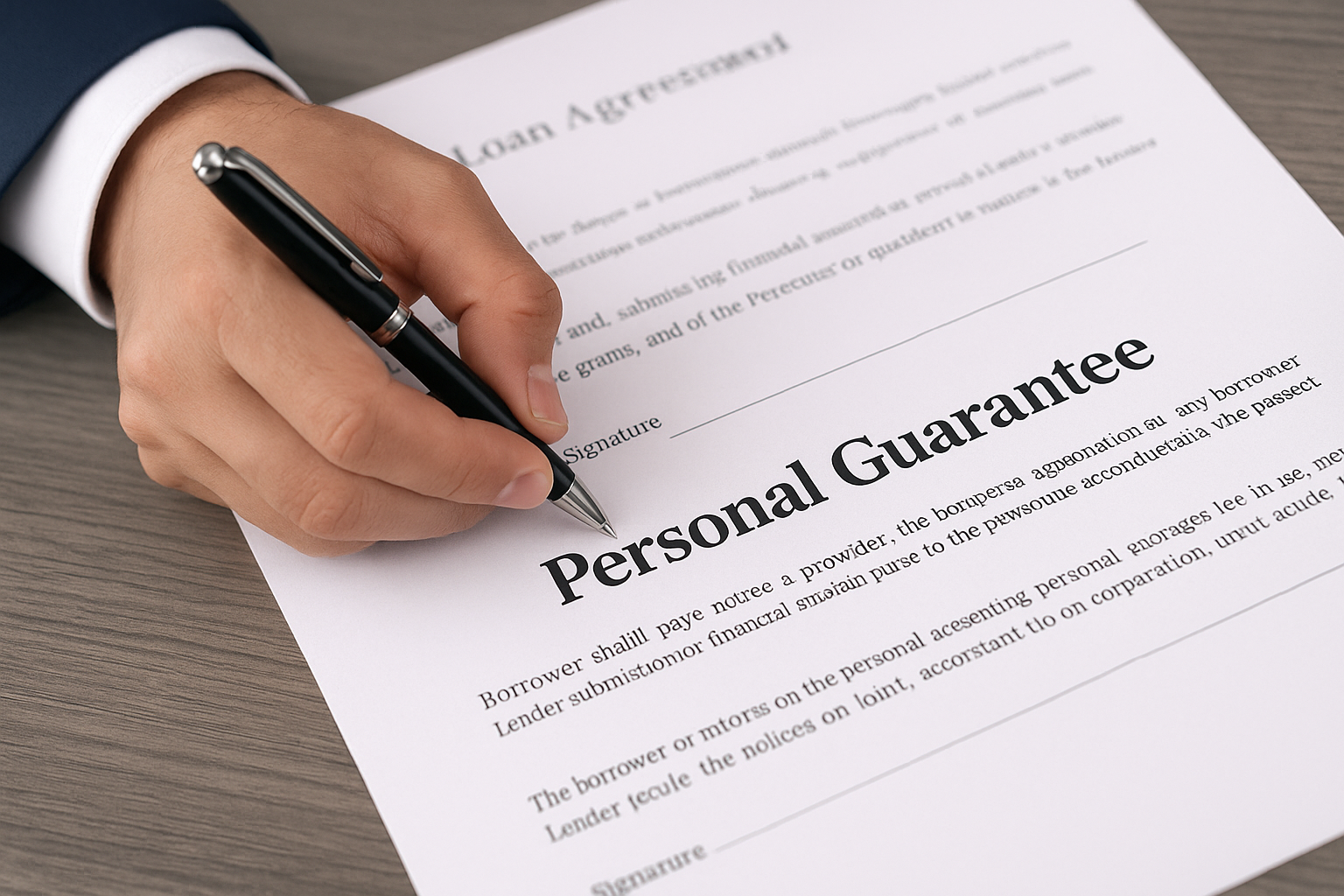1 (800) 584-0324
When applying for financing, many small business owners are surprised when lenders ask for a personal guarantee business loan. A personal guarantee (PG) can unlock access to funding but also puts your personal assets on the line. In this article, we’ll explain how PGs work, why lenders require them, and smart strategies to reduce your risk.
What Is a Personal Guarantee in a Business Loan?
A personal guarantee business loan requires the owner(s) to pledge personal responsibility for repayment. If the company defaults, the lender can pursue the guarantor’s personal assets, such as bank accounts, property, or investments.
There are two main types:
- Unlimited personal guarantee: You’re liable for 100% of the debt until it’s repaid.
- Limited personal guarantee: Caps your liability at a set amount or percentage. Often used when multiple owners guarantee proportionally.
Why Lenders Require a Personal Guarantee
- Risk reduction: Especially for startups or companies with limited assets.
- Commitment check: Shows you believe in your business enough to back it personally.
- Credit support: Provides lenders with recourse if the business lacks collateral.
According to the SBA, most 7(a) and 504 loans require PGs from owners holding 20% or more of the business. This makes understanding a personal guarantee business loan essential for entrepreneurs.
Risks of a Personal Guarantee
- Personal asset exposure: Your savings, real estate, or even retirement accounts may be at risk.
- Credit score impact: Defaults can hit both your business and personal credit.
- Legal action: Lenders can sue guarantors directly.
- Long tail risk: Guarantees may survive even if you sell your ownership stake (unless released).
Smart Strategies to Mitigate PG Risk
1) Negotiate Limited Guarantees
If multiple partners are involved, request proportional guarantees tied to ownership.
2) Add “Burn-Off” Clauses
Negotiate to reduce or eliminate the guarantee after hitting certain milestones (e.g., DSCR above 1.35x for 4 consecutive quarters).
3) Leverage Collateral Instead
Offer equipment, receivables, or real estate to secure the loan and reduce PG reliance.
4) Maintain Adequate Insurance
Key-person and business interruption insurance help ensure obligations can be met if unexpected events occur.
5) Refinance Over Time
As your business grows and builds credit, seek refinancing options with lenders that don’t require PGs.
Personal Guarantee Business Loan: U.S. vs. Canada
- U.S.: SBA loans require PGs for 20%+ owners. Private lenders may be flexible but almost always include PGs for smaller firms.
- Canada: BDC and CSBFP loans also frequently require PGs. In many cases, personal guarantees supplement limited collateral.
For cross-border businesses, plan ahead—both countries use PGs as a standard risk-mitigation tool.
Before signing a personal guarantee business loan, make sure you fully understand the risks and alternatives. At Agile Solutions, we help entrepreneurs structure financing, negotiate terms, and find lenders that minimize PG exposure.
👉 Book a consultation today at agilesolutions.global or email us at info@agilesolutions.global
#PersonalGuarantee #BusinessLoan #SBALoan #BDC #CSBFP #BusinessFinancing #PrivateDebt #CapitalMarkets #LoanRisk



